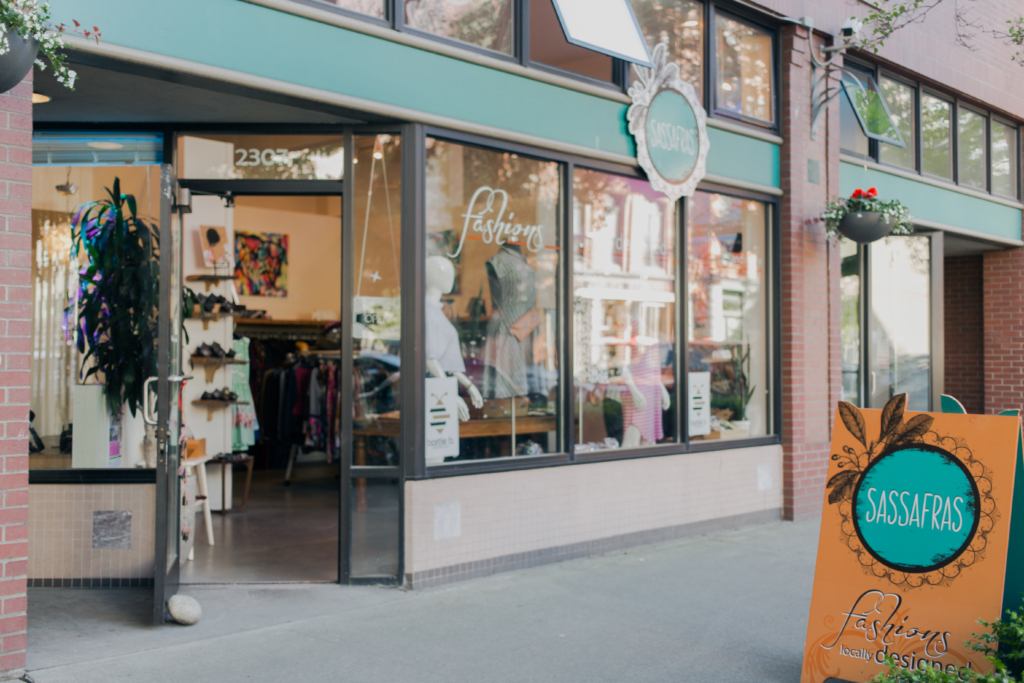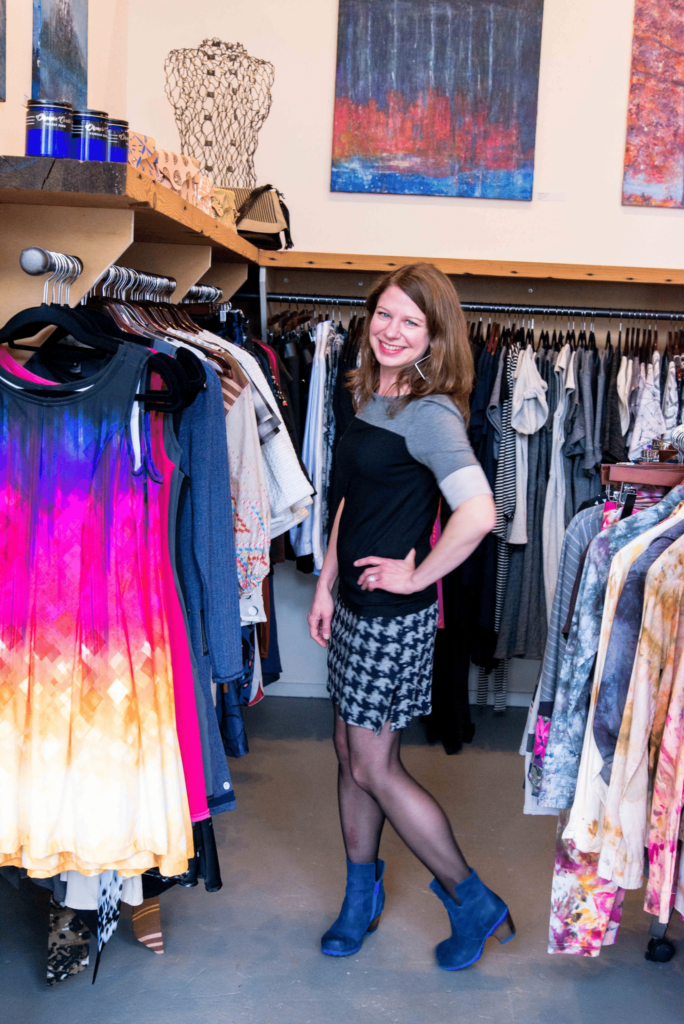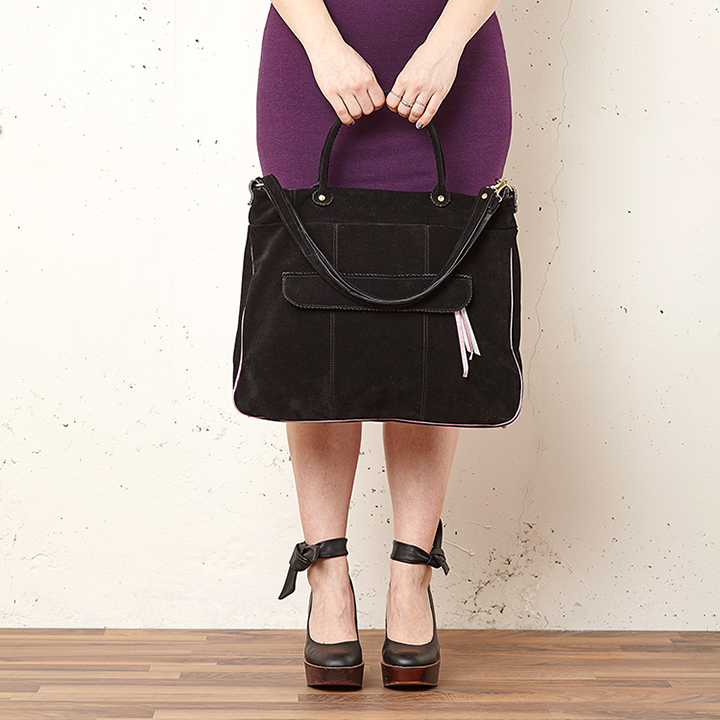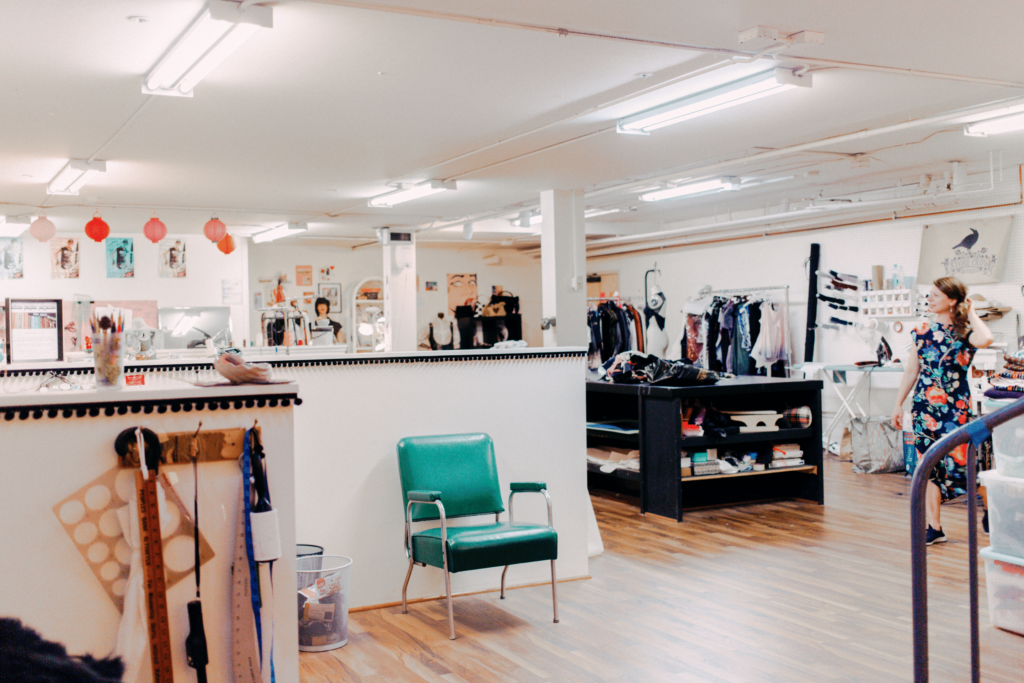Picture this: it’s the week of Christmas in 2012, and an eager store owner has opened a beautiful boutique in Belltown. In a pinch, she realized she doesn’t have a display table. Her dining table from home would have to do.
Spoiler: The holiday season at the shop kicked off wonderfully — but she really had to make do without a table at home for the holidays.
That young boutique, called Sassafras, has grown a lot since its dining table display days, but this past year has been one of its most turbulent times yet.
“We’re happy to still be here,” Sassafras owner Amy Tipton said. “I’m part of a Facebook group that’s all Seattle boutiques and about 50% of them closed forever last year. I feel like the whole retail scene in Seattle is totally different from before the pandemic.”
Amy lamented the year and a half that Sassafras was closed, and noted that its windows were boarded up for most of it. While some business owners were eager to permanently pivot their business strategy to adapt to the increasingly virtual landscape, Amy knew that the store would continue to require in-person engagement — for both business and morale.
“It’s not Sassafras if I can’t connect with a person. If I can’t see the clothing in person and feel the texture and appreciate the themes and design lines then this is not the business for me,” she said. “I didn’t realize how much I was connected to the physical world and how much I missed that.”

You see, Sassafras is a unique boutique because many of the garments you’ll find in the store were made right downstairs by local designers. That means if you see something you love but need it in a different size or want it in a different color or fabric, you can place your request directly with the maker.
The inspiration of the boutique spawned from Amy’s experience selling her own designs at local markets. She found that the markets were largely saturated with second hand or thrift goods, and shoppers weren’t eager to spend on small-batch, designer garments —- even at reasonable prices.
Amy wanted to provide a home for local clothing and jewelry designers. She started to envision a space where they could make and sell pieces from their collection, host trunk shows, and find mentorship. Still, many of the in-house designers are recent graduates of Seattle Fashion Academy.
“I would go around to the different schools and their final fashion shows, portfolios, and showcases,” Amy said. “I’d talk to the students and say, ‘What’re you doing next? How can I help you?’ … A lot of the design programs teach you a lot about quality, efficiency, and pattern design but not too much about business. So now you know how to make a collection but what are you supposed to do with it? So I try to guide them through that next step.”

If you walk into Sassafras today, you’ll find an exceptionally curated array of handmade handbags, jewelry, and clothing that reflect a timeless Pacific Northwest style. Many of the items are made from deadstock fabric or vintage pieces and, since they’re made in small batches or made-to-order, you’ll find there’s rarely large “sales racks” or clothes waste.
Since it was impossible to replicate the Sassafras experience virtually, Amy decided to focus on keeping the store alive without planning on permanent shifts. This effort included shoring up the online store, hosting virtual auctions, and making masks. Lots of masks.
The once bustling storefront practically became an underground mask factory.
“I started working with an organization called Crafters Against COVID-19 that was making masks for medical facilities that needed them,” Amy explained. “I think between all of us [at Sassafras] we probably made between 3,000-4,000 masks between March and July of last year. The big deal was finding elastic. It was not coming into the country from China anymore so it was really a hot commodity to have elastic.”
Sassafras also got a small grant from Amazon which Amy used to buy more mask-making supplies so that her designers could sell masks at PCC Community Markets.
“So it was kind of a job creator with Amazon funds and we did that for a while,” she said. “We normally collect studio rent from the designers downstairs, but I told them they could pay in mask dollars. So each mask they made was $5.”
Amy said that, in spite of this year’s challenges, the Seattle small business community has banded together in support.
“The community has been so sweet. In Seattle, a lot of small businesses are connected to each other regardless of neighborhood. I feel like I got referrals from places I don’t even know about.”
As business-as-usual feels nearer, Amy is excited to welcome back new and familiar faces and showcase some of her favorite designs.
“I love everything here or I wouldn’t be able to sell it,” she said. “Right now everything that’s made here is fantastic. The KFly brand is made by Katie Flynn downstairs and she’s done a great job about size inclusivity. She does sizes XS-4XL and her designs are made for curves, and I don’t have curves but they make me look like I have curves, so it’s kind of a magical design. And then there’s what Shari Noble makes. She does a lot of leather handbags and oftentimes using repurposed leather, so she can take a long trench coat from the 70s and change the leather and make a handbag out of it or a smaller jacket. It’s just the creativity!”

While you can buy so many amazing things off the rack at Sassafras, Amy pushes back on a shopping culture that relies on instant gratification. She urges that waiting two weeks for your perfect custom item that’s made ethically right in Belltown is truly worthwhile.
“When I tell people we make about 50% of the clothes right downstairs by six independent designers, it just blows their mind. So sometimes, if we’re not too busy, I’ll let people tour the studios and they’re so fascinated and they’ve often never thought about how their clothing was made. Fashion isn’t really glamorous, it’s a lot of sweat and tears and work and this place really showcases that.”

But Amy says that many local businesses are truly still in “struggle mode” and need continued community support to survive. She recommended stopping into stores like Sairen and Handmade Showroom and getting a massage at Spa Noir — just naming a few of her favorites.
Another way to support Amy and the Belltown neighborhood is to show up to the revived Belltown Art Walk which starts up again on Friday, August 13th.
“Make it lively here! We miss everybody and we just want to hang out,” Amy said. “If people don’t come out to the Belltown Art Walk now, I don’t know how long it can sustain. These are free things you can do that are really supportive — just show up and tell your friends about us.”
Ultimately, Amy has hope and is feeling reinvigorated by the flutter of life that’s coming back to the Belltown neighborhood and Greater Seattle Area.
“Small businesses are the heartbeat of a neighborhood,” she said. “That’s how you make connections in real life, through conversations, not through an online transaction. It’s good.”